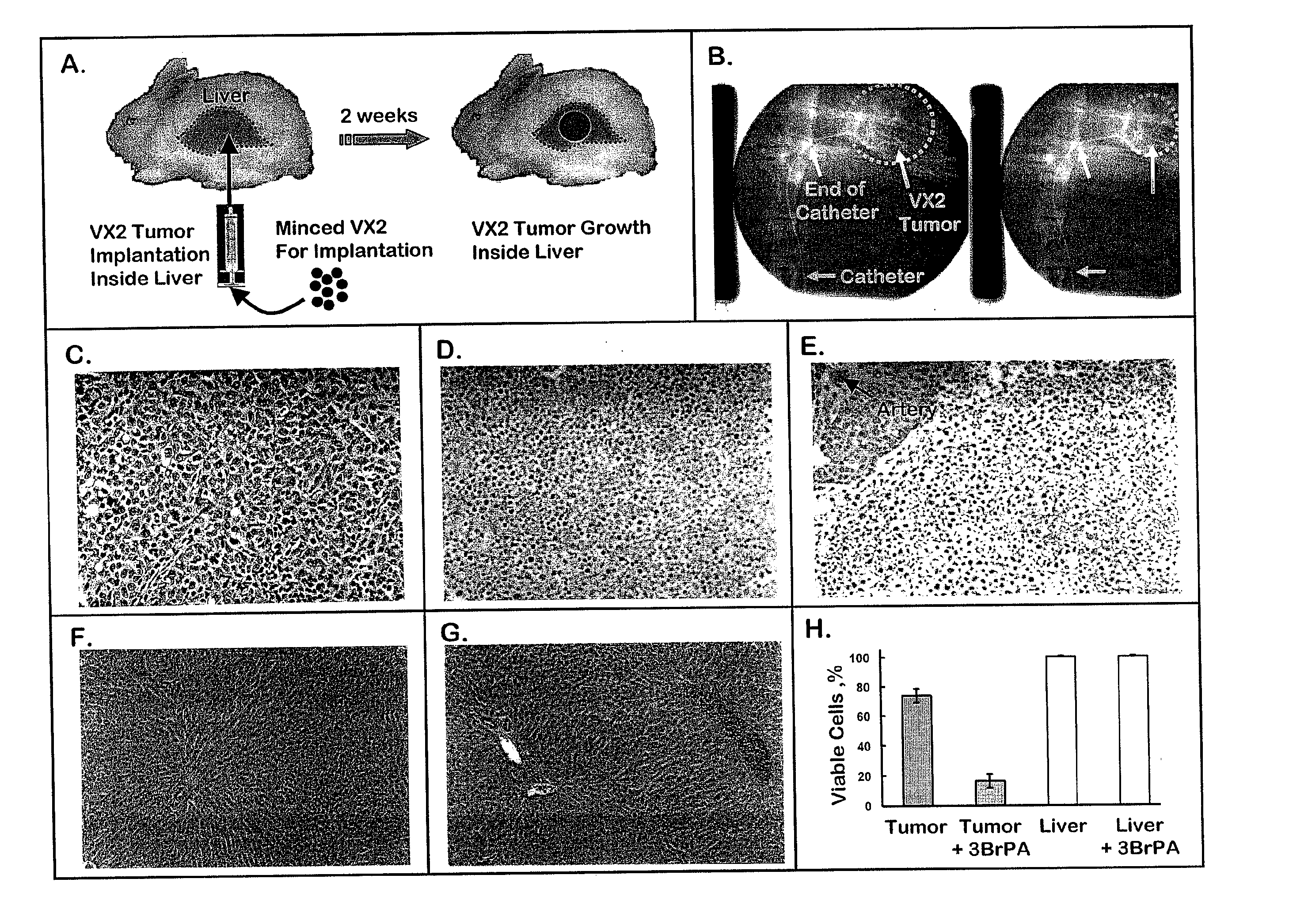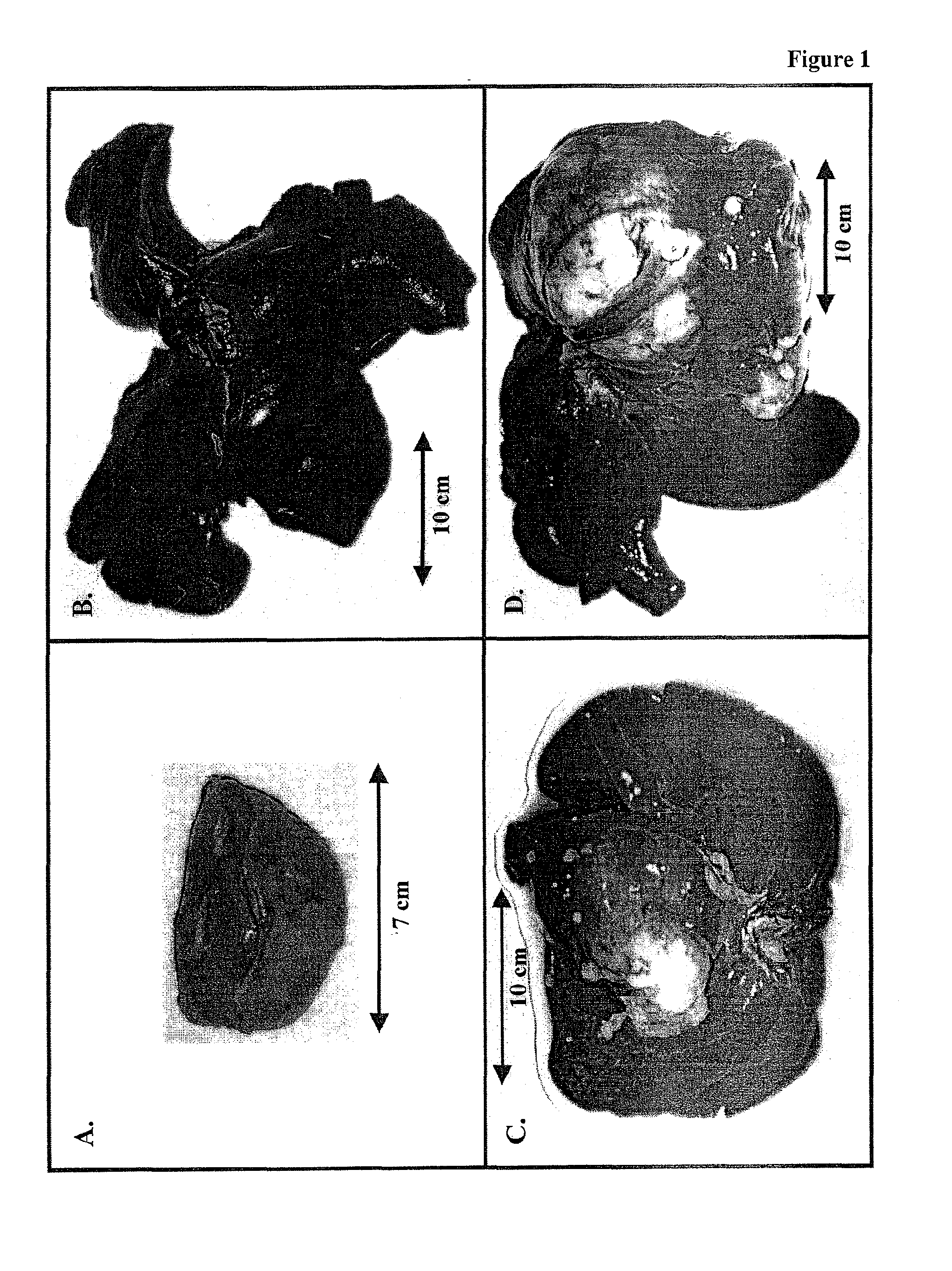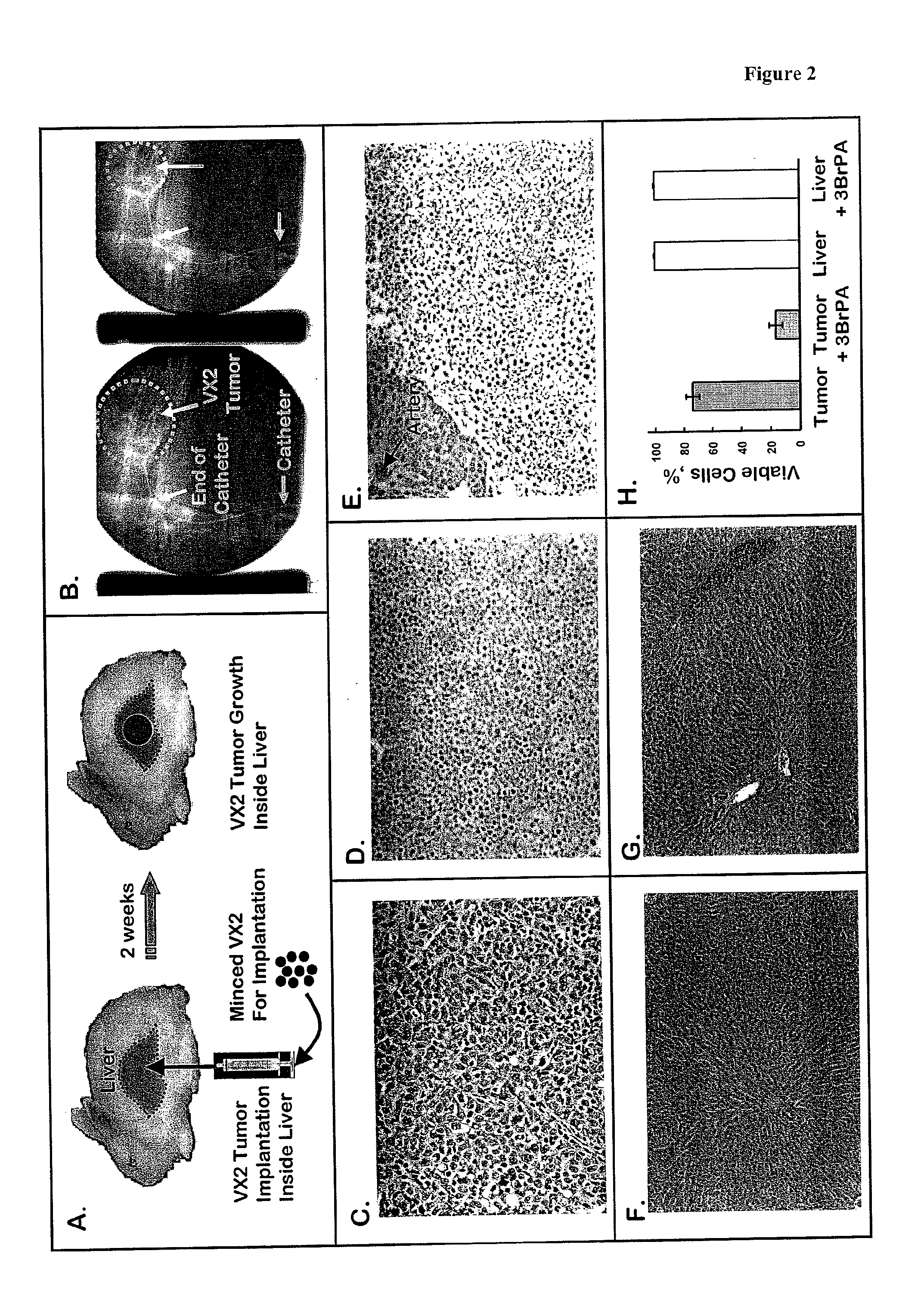Therapeutics for Cancer Using 3-Bromopyruvate and Other Selective Inhibitors of ATP Production
a technology of atp production inhibitors and 3bromopyruvate, which is applied in the direction of drug compositions, bacteria material medical ingredients, peptide/protein ingredients, etc., can solve the problems of traditional treatment options, inhibiting metabolic activity, and a mean survival time of about 6 months
- Summary
- Abstract
- Description
- Claims
- Application Information
AI Technical Summary
Benefits of technology
Problems solved by technology
Method used
Image
Examples
example 1
Materials for VX2 Tumor Experiments
[0160]New Zealand white rabbits weighing 3.5-4.2 kg were obtained from Robinson Services Inc. The VX2 tumor, normally grown in the hind limb of these animals, was obtained locally from Dr. John Hilton, Department of Oncology, Johns Hopkins University School of Medicine. AS-30D hepatoma cells, an established line, are maintained by Min Gyu Lee in the inventors' laboratory. This is done by growth and passage of the cells in the peritoneal cavity of female Sprague Dawley rats (Charles River Breeding Laboratories). The following agents were obtained from Sigma: D-glucose, 2-deoxyglucose, 2-fluoro-2-deoxyglucose, 6-fluoro-6-deoxyglucose, 3-O-methylglucose, 5-thio-D-glucose-6-phosphate, L-glucose, D-xylose, D-lyxose, 3-bromopyruvic acid, ATP, ADP, NADP+, D-mannitol, Hepes, succinate, oligomycin, and bovine albumin. The lactic acid kit containing lactic dehydrogenase, NAD+, hydrazine, and a glycine buffer, pH 9.2 was obtained also from Sigma. NaPi, KPi, a...
example 2
Processing the VX2 Tumor for Biochemical Analyses
[0161]In one set of studies the VX2 tumors, which had grown in the hind limb of New Zealand white rabbits for 4 weeks, were excised, cut into 1 g pieces (ca. 10 mm×10 mm×10 mm) with a razor blade, and then subjected to assays described below for monitoring both glycolytic and hexokinase activities. In a second set of studies VX2 tumors, which had grown in the hind limb of a New Zealand white rabbit for about 2 weeks, were excised, broken into small chunks (<0.1 g), and then implanted into the livers of a number of other rabbits. Following implantation, VX2 tumors rapidly developed in the livers of each animal. They were excised at different times ranging from 2 to 5.7 weeks and also subjected to the assays described below for monitoring glycolytic and hexokinase activities, as well as an assay for monitoring mitochondrial respiration. In all cases the exterior surface of the tumor was shaved to remove any remaining normal tissue. In a...
example 3
Assay for Glycolytic Activity in the VX2 Tumor
[0162]Glycolysis was assayed by monitoring the formation of lactic acid following the addition of glucose to a medium containing VX2 tumor slices. Specifically, freshly excised tumors were washed 3 times at 4° C. in 20 ml Chance Hess Medium containing 6.2 mM KCl, 154 mM NaCl, and 11 mM NaPi, pH 7.4. Slices, 1 g each, were then prior incubated for 30 min in a Lab-Line incubator-shaker at 37° C. in 2 ml of the same medium while shaking at 50 rpm. Glucose was then added to give a final concentration of 6 mM, after which the incubation / shaking process was continued with 0.2 ml samples being removed every 30 min for up to 2 h. Then, samples were removed for analysis at 2 additional time points indicated in the Figure. These samples were subjected to centrifugation at 14,000 rpm in an Eppendorf Centrifuge (Model 5415C). Then, aliquots of the supernatant, 0.01 ml, were removed from each sample, diluted with 0.03 ml of water and subjected to lac...
PUM
| Property | Measurement | Unit |
|---|---|---|
| Time | aaaaa | aaaaa |
| Time | aaaaa | aaaaa |
| Molar density | aaaaa | aaaaa |
Abstract
Description
Claims
Application Information
 Login to View More
Login to View More - R&D
- Intellectual Property
- Life Sciences
- Materials
- Tech Scout
- Unparalleled Data Quality
- Higher Quality Content
- 60% Fewer Hallucinations
Browse by: Latest US Patents, China's latest patents, Technical Efficacy Thesaurus, Application Domain, Technology Topic, Popular Technical Reports.
© 2025 PatSnap. All rights reserved.Legal|Privacy policy|Modern Slavery Act Transparency Statement|Sitemap|About US| Contact US: help@patsnap.com



